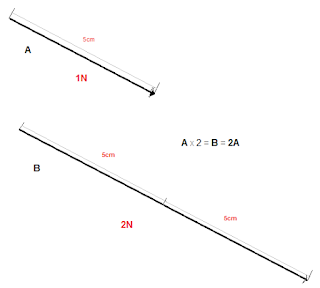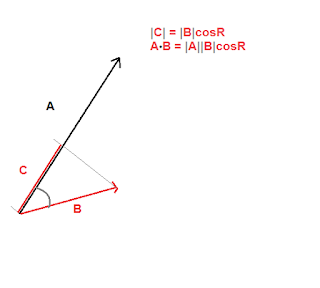A Look Into It
In this universe, there are actions, reactions and there are residues or things that are left off in the limbo. To make stuff happen you almost always gotta push stuff somewhere or about to replace or displace some other stuff. And in the end, you gotta deal with the outcomes whether they are the results you want or the leftover issues that you can't use. The things we gotta handle whether we are pushing them or waiting for it to happen are called 'quantities'. There are generally two kinds:
- Scalar Quantities
- Vector Quantities
Scalars: That Have No Direction
Some quantities sort of exist everywhere without really having any need to 'punch' or 'hit' or 'run'. They cover a 'space' or 'region' or they just encompass. One example is time. Time is usually the same for everyone in a certain place. Anywhere you move to in that place will tell you the same. Another quantity is Volume. A volume is a region bounded by an imaginary or by concrete walls. Another one is Temperature. It can be hotter or colder in different parts of a room, but the temperature just encompasses but each region has its own values and you only feel it when you around there. The following are scalar quantities:
- Mass
- Time
- Volume
- Temperature
- Speed
- distance
- Power
- Energy
These quantities have a value but no direction. They can only be measured inside a 'region' but they don't push or pull or run.
Vectors: The Directed Member
Some quantities not just have a value, but act at a point or through a point where it is felt. For example, a force. A force is a push or a pull on some physical object. It tends to make thing move along a line, but more accurately it tends to make things want to change how things move in direction and velocity. Another vector quantity is velocity. It is actually the speed of an object in a particular direction> A list of vector Quantities are below:
- Force
- Velocity
- Acceleration
- Temperature Gradient
- Displacement
- Momentum
- Torque
Scaling: A fence(?)
Vectors are usually given a representation that shows their magnitude as well as direction. It is usually a line segment that looks like an arrow like below:
The Line segment is a straight line directed 50 degrees to some horizontal and is 7 units long. The 7 units shows how much this vector is. If it were a force it would 7 Newton or 7 pounds. If it were a velocity it would be 7m/s or some other... The two designations of magnitude and direction are important because if it had the same magnitude and was directed differently it would yield a different result such as push a ball into the ground instead of kicking it into the air. Also if it had a smaller magnitude but the same direction the amount of punch would be lighter.
Using Lines And Triangles: Adding(?)
Adding Scalars
Adding and subtracting scalars is a mere normal arithmetic. Its like adding one plus one. If you add two scalars like 3cm and 4cm you simply have 7cm as long as you are looking along the same length. The two or more scalars being added and subtracted must have the same units of measurements. For example, you can't add 10cm and 40o Celsius. That won't make any sense. Also, when adding distances for example, the units must have the same scale. What that means is that 4km plus 3m is not 7'something'. You have to first change one or the two units to the same units as the other. If I change both to cm, it would be 400000cm plus 300cm equals 400300cm.
Adding Vectors
Adding vectors is quite another matter. This is because vectors have both a magnitude and a direction. Check out these two vectors:
They are forces pushing on an object. These two forces can be replaced by a single force which will push the block in the same exact fashion. To find this force you have to do a 'vector addition', and you don't simply add the magnitudes of these forces together you have to take into account the direction of action. To do the addition you join them end-to-end like below:
After you done with the above reconstruction, you now join connect the end of the first vector the the arrow point of the second vector like below:
In this case the resulting vector, even called a resultant is longer than the two vectors it replaced and it has its own direction and magnitude, generally different from the first two. There are two ways you can find te value of the resultant:
- Calculation
- Scaled Drawing
Calculation
In order to find the values of the vector C we need the angle between A and B:
The bars around the letters A and B mean we are dealing with the magnitude here, not the whole vector designation. If we want to deal with the vector as a whole, we write it like |A|<330. This designation shows both direction and magnitude. You need a lesson in the 'solutions of triangles' to solve for C. You need both the magnitude and direction of C to get get a complete solution.
To add multiple vectors, you simply add them end to front and you connect the end of the first vector to the arrow point of the last one. Don't mind my solution. You can start with any vector you like, you always get the same answer and remember get both the magnitude and the angle representing the direction.
Scaled Drawing
A scaled drawing is a drawing where each line is scaled properly so that the final answer can be rationed back into the proper units. For instance you can say 'every 5N will be represented by 1 unit in my vector addition', and you start drawing it out with a protractor and a ruler.
A scaled drawing would be good for the multiple vector addition from above, Look at the diagram below
Running One Thru Another: Multiply
You can multiply
- A scalar with a vector to change the vectors length and/or direction
- A vector with a vector to get a scalar
- A vector with a vector to get a vector
Scale the vector
When you multiply the vector with a scalar, you are either changing the length of the vector or maybe flipping it to point in the reverse direction. If you multiply a vector with a negative number, its direction also reverses along with the size changing. Look at the figure below
Getting out the coverage(Scalar Products)
When you multiply a vector to get a scaler, you do it like below
This kind of multiplication is also called a dot product. Its as if you were taking the part of B that was effective on A and looking for a value that represents how much of that effective part's value you could get out if you counted it |A| times. The value is a number with no directional angle to it.
Twists one on the other(Vector Products)
When you multiply one vector with another vector and you get a vector as a result, how you do it is seen below
Its as if the part of the vector B that's perpendicular to A was being used to turn A like you would when using a wrench. Since you have to account for both twisting and angle on which you twist, the result of this multiplication is usually a vector that is coming out of the plane where A and B lies. It is perpendicular to this plane and coming out if the twist is anti-clockwise and goes in(opposite to how it looks in my drawing), when the twist is clockwise this vector dips into the page. clockwise.














No comments:
Post a Comment